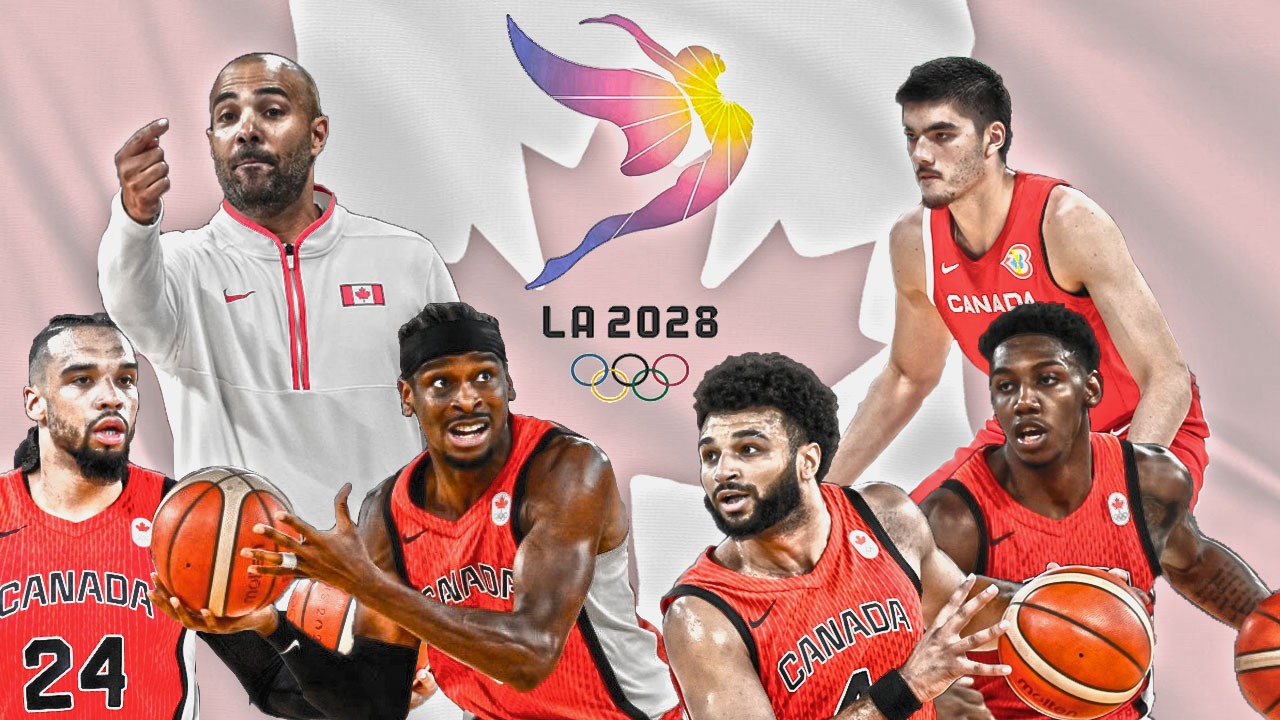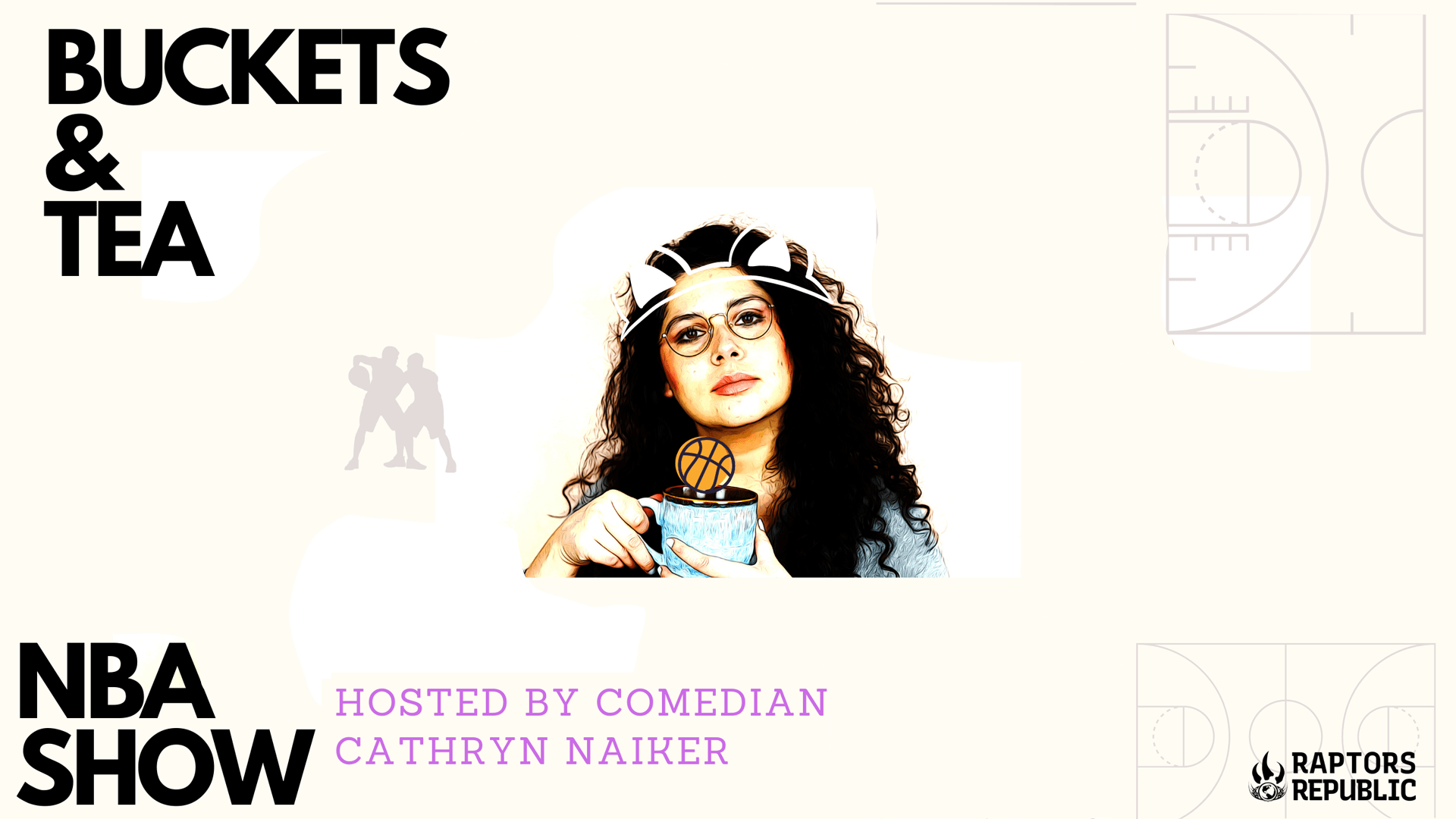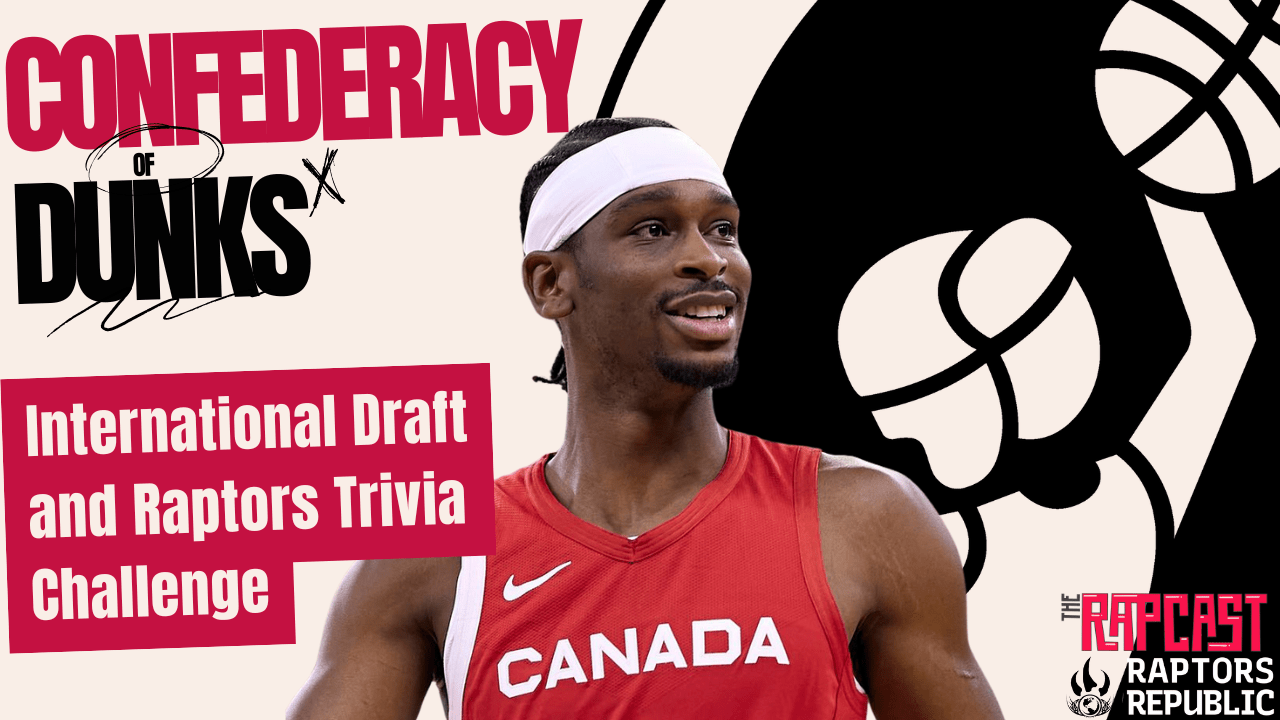“The world needs more Canada,” said charismatic singer-songwriter Bono in 2003. And Canada led by example in the recent Paris Olympics, making its name resound more than ever. The strokes of three-time gold medalist Summer McIntosh treading the water, the screams of Andre De Grasse, Aaron Brown, Jerome Blake, and Brendon Rodney after clinching the gold in men’s 4×100 meter relay, or the gasps of Phil Wizard while cutting through the wind in his spectacle to proclaim himself Olympic champion in breakdancing.
But Canada couldn’t surpass expectations in every field. Nothing from that absorbing sound of the shoes sliding on the floor and the ball bouncing, the compelling sounds of the ball splashing over and over. Nothing from one of the best things Canada has ever brought into the world. No Canadian flag was lifted into the air because of basketball. Without basketball, Canada is not so much Canada.
Women’s 3×3 were close to medaling, finishing fourth, and women’s 5×5 got knocked out in the group stage, noticing the lack of time for WNBA players to fit together. But nothing hurt more or was more unexpected than seeing the men’s team not earning the opportunity to advance to medal contention. Host France’s rowdy party in the quarter-final overwhelmed Canada, who had blown out the French team in the World Cup just one year before.
After being the untamable underdogs in the World Cup and earning a bright bronze, the favourite’s role didn’t suit Canada. The Canadians had earned the right to call themselves the second NBA powerhouse. But they saw that the pressure coming from the spotlight once you are called one of the frontrunners is not easy to deal with. More than the team per se, Canada Basketball voiced high expectations heading into the Olympics. The bronze medal plus a group better assembled after one year and the incorporations of Jamal Murray and Andrew Nembhard made up plenty of reasons to set such an ambitious goal.
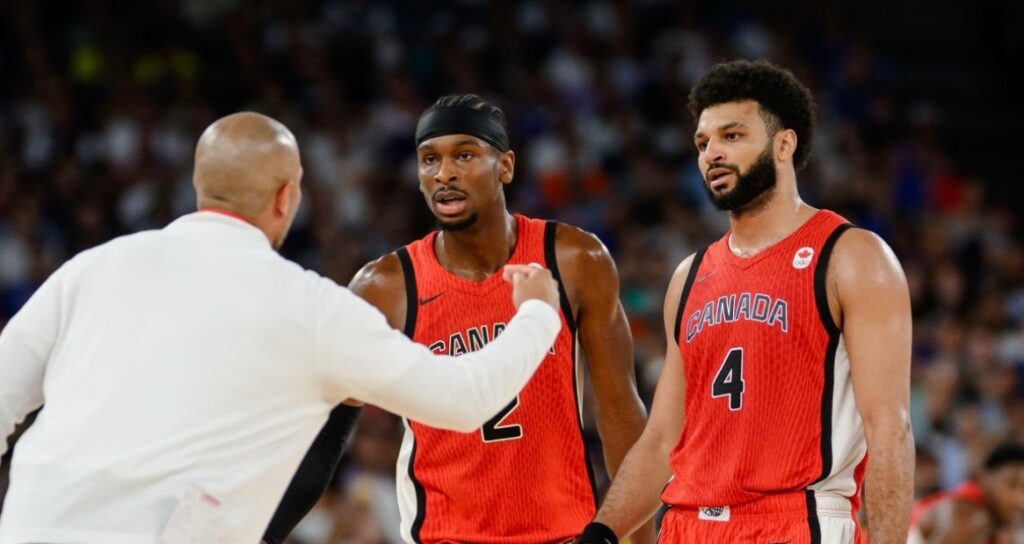
While it backfired in this case, ambition means growth. And looking into the exciting future awaiting Canada with the 2028 L.A. Olympics on the horizon, the Canadians will have to learn to coexist with pressure. Actually, this is the first takeaway that the national team and Jordi Fernandez can draw from Paris. Although he exuded an evident frustration, Fernandez touched on what the future might have in store for Canada.
“We have very good players, players who will be in the next Olympics, and we have to look at it like that,” he said after defeat against France.
However, Fernandez’s continuity still has to be confirmed. Canada Basketball CEO Michael Barlett said in an interview with Michael Grange for Sportsnet he has a pending conversation with the Spaniard, but nothing indicates Fernandez will not extend his contract. Putting the future into perspective in the first person as he did after the elimination was a good sign, and the disappointment in the Olympics doesn’t take away the credit he gained in the World Cup.
His new head coach position with the Brooklyn Nets will take more of his time, but he said in the training camp both parties, him and Canada basketball, saw it as something positive. After all, as Canadian basketball on the international stage, Fernandez has the talent but needs much more experience. He will be a rookie next season in the NBA, and it can’t be overlooked he has just finished his sophomore summer with the national team. Perhaps in four years, hopefully all of them spent as an NBA head coach, Fernandez himself will be seasoned and improved, liked his players.
Canada possesses a deep pool of talent that is becoming deeper and deeper over time, proved by the fact that the country is the one most represented in the NBA after the U.S. with up to 26 players in the league last season. There are stars and role players aplenty, and there will be even more. Talented generations are entering the league and will include players (cough, Zach Edey, cough) who can address the weaknesses of the actual team.
But, first, just take a look on the surface, at the roster that played the Olympics, to notice how solid the foundation for the next four years is.
A young current roster
A lot of key pieces will have a good age to compete in L.A., and even you can tell all of them will be in their prime or their late prime, starting with Shai Gilgeous-Alexander, who will turn 30 years old in the ’28 summer. The rest will be still in their late 20’s or their very early 30’s: Jamal Murray (31), RJ Barrett (28), Dillon Brooks (32), Luguentz Dort (29), Andrew Nembhard (28), Nickeil Alexander-Walker (29). Trey Lyles will be 33. Simply based on average aging curves, the core of Canada’s current team should be better in 2028 than it was in 2024.
You also will have a few players who will be over 35, but in today’s basketball, it’s still an age when you can fill a role. In most cases, these players for Canada will be big guys who don’t rely on heavy athleticism: Dwight Powell (37), Kelly Olynyk (37), Khem Birch (35), and Melvin Ejim (37). Ejim, a small forward, would be a meaningful absence to cover given his role as a vocal leader, mentor, and valuable teacher as a FIBA game maestro. If he doesn’t make the roster, don’t write him off as a part of the coaching staff.
Andrew Wiggins and his versatility as a two-way player can’t be left out of the conversation. At 33 years old in 2028, he might gain another opportunity in L.A. after the Warriors pulled him out from the national team for Paris before the start of the training camp.
This core of players has set a very consistent base to build around in such a short period, with the Olympics consolidating a few features despite the final crash. At the same time, Canada, through a kind of necessary soul-searching, has discovered in the two last summer its potential with that for-years-longed-for commitment from NBA players.
Canada has a face already in Shai Gilgeous-Alexander, a singular and heterodox one between his length standing at 6-foot-6, and his mid-range pull-up signature shot. But you could tell Canada has two faces in reality, one on each end of the floor with Dillon Brooks the ringleader of the cohort of defenders that Jordi Fernandez has at his disposal. Moreover, one complements the other: SGA is the flashy star who delights the fandom. Brooks is the nasty villain who makes himself hated by getting into his character.
It might be insignificant in terms of basketball, but this Canadian team has a teaser, something special to sell to even those who don’t like basketball, an eye-popping poster.
Canada also has a very recognizable identity that consolidated in Paris, based on a tough-as-nails team in terms of defence and mindset, with a tested character proved in a flawless first group stage with three wins. The first round saw a team that reacted to adversity against Australia, and especially against Greece and Spain. They were inferior teams on paper that punched back until the end but found an even more resistant Canadian team. Even against a strong France program and with just RJ Barrett emerging to help Shai, Canada showcased character and gained chances to survive down the stretch.
The lack of size, the most serious problem
Now it’s time to mention the buts and how the national team can find answers looking at his ascendent growing talent. It’s timely to bring up the face of the future, Zach Edey.
We know the story, but it’s worth going through the key aspects of the loss against France to highlight to what extent Canada needs size if it wants to take the step to the next level.
The French national team, dissected just one year before in the World Cup (95-65) played mercilessly with a smart and well-prepared game plan. They used size at the wings to bully Canada after switches. The game revealed much about Canada.
France had two deficiencies: a lack of shooting and a lack of ball handling, without a point guard capable of dealing with the terrific pressure of terrific NBA perimetral defenders such as Dort and Brooks.
French coach, Vincent Collet made a shake-up to completely invert the picture, literally converting the strengths of Canada into weaknesses, showing the most accurate formula to counter Jordi Fernandez’s formula.
Before that quarter-final duel, Jonathan Chen analyzed the keys to swarming Canada’s defence. Because of the interior lack of size, the Canadians had to put a lot of pressure on the rival’s backcourt to keep the ball away from the paint and to take away time and space for opponents to read and find mismatches close to the rim. France often utilized a 4-out motion offence and managed to isolate a player in the post. Taking the ball early in the possessions to this player –usually Yabusele or Lessort — and simply bullying from there was a very efficient way to keep help from the weak side away and to get the right matchup in the paint taking advantage of Canada’s switching defence. It also resulted in tons of fouls on Canada, which impacted the game in countless other ways.
Frace drove the ball all the way from the perimeter rarely, meaning it avoided falling into the trap of Canada and its tireless defenders digging down and swiping at the ball to kickstart its transition game.
Kelly Olynyk presumably was a solution to minimize struggles from lack of size, but Jordi Fernandez didn’t use him that much during the Olympics. The Spaniard went all in on small ball with Dwight Powell playing 5 and Brooks 4 in the starting lineup. Canada got three wins against Greece, Australia, and Spain, teams with more size. The Greeks were the paradigm with two-time MVP Giannis Antetokounmpo.
But France played a very different game. Jordi Fernandez might have made mistakes against France on both ends of the floor, as the offence was too stagnant in the first half. But, again, he is a sophomore and, still, he got a remarkable victory over FIBA maestro Sergio Scariolo in Spain’s game. It wasn’t a fluke the former Raptors assistant coach didn’t play his most prolific scorer, Willy Hernangomez, down the stretch. The former NBA center couldn’t keep up with the fast pace of Canada. Fernandez imposed the pace Scariolo didn’t want.
Canada couldn’t run the gamut as Jordi wanted in large part because of Zach Edey’s absence. He didn’t get permission from the Memphis Grizzlies after the draft despite having played in the World Cup.
Toronto’s native center can cover the needs related to lack of size, but, again, a sole affirmation like that is just scratching the surface. It is worth digging deeper into how Edey can impact Canada’s game on both ends of the floor looking forward. The variety of things the intimidating giant can bring to the table is fascinating.
The Zach Edey’s potential effect
The ninth pick of the NBA draft still has a lot of room for improvement at 22 years old and is a player who didn’t start to play consistent basketball until high school. There are some concerns about his lack of mobility and his capability to guard in more open spots, but the FIBA game benefits Edey, who can station himself in the paint. The new Grizzlies center might be a permanent rim protector as a roamer, especially in the context of a zone defence, where he could be the anchor. It’s important to highlight zone defence is much harder to counter with FIBA rules. Perhaps against France, he would have been able to help from the paint in those wing post-up situations and forced the ball elsewhere, limiting fouls, and keeping the defense intact.
He would fill the needed role of a rim protector through the drop coverage in pick and roll situations as of now. The known downside of this kind of coverage is that gives the opposing handler more time and space to operate coming off the screen, but Canada has a bunch of elite perimeter players in the art of navigating screens to protect Edey such as Brooks, Dort, or Alexander-Walker. Therefore, Toronto’s center fits perfectly into the existing system. Anyway, the two-time National Player of the Year, showcased in the NCAA an intriguing and growing ability to hold back smaller players in drives and block their shots.
But while it’s undisputable defence is where Edey is most needed, Canada’s future could take a lot of benefits from the 22-year-old prospect on the offensive end, starting with the pick and roll.
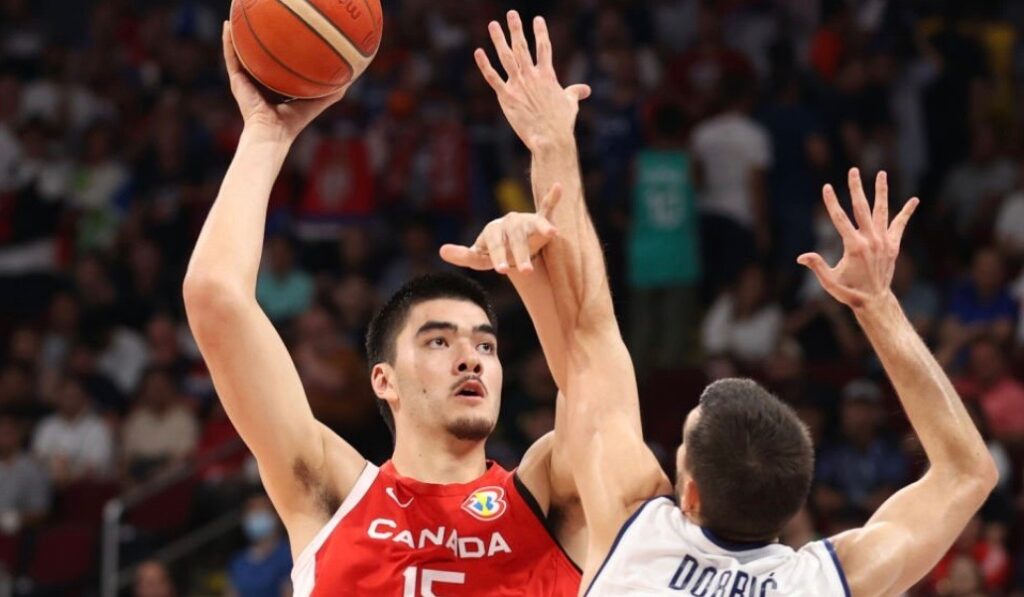
It can’t be overlooked that Canada couldn’t run a huge number of pick and rolls in the Olympics with Kelly Olynyk almost out of rotation in some games. That impacted SGA, who didn’t have a reliable partner in the pick and roll in Dwight Powell, and got more advantage from playing these actions with smaller players or felt more comfortable at times going with isolation sets.
The game against Australia set a good example of the struggles in these specific situations. The Aussies ramped up their pressure on Gilgeous-Alexander around the end of the first half in the pick and roll with Powell as a screener with an edge and recover defence. Depending on the grade of aggressiveness, this kind of defence can turn into an almost double team, leaving the screener unguarded in the roll. But Powell is not a threat in such scenarios, and this coverage disrupted the rhythm of SGA.
Jordi Fernandez adjusted ahead of the second half and Canada didn’t play more pick and rolls for SGA with Powell involved. The Canadians found Gilgeous-Alexander’s plays flowed more without screening, and the team emptied the left side for the Thunder’s star to make plays around the post.
Zach Edey will provide Canada with endless offensive alternatives starting with the 2-on-2 game. Given he is a force rolling to the rim, a lot of teams will opt to defend him with drop coverage in the pick and roll, thus giving the handler extra space. Considering how easily SGA or Murray can take a spot for mid-range shots, 2-on-2 actions with Edey involved will put opponents in a dilemma. While switching might disrupt the play of Shai or Murray if the center is athletic enough, Toronto’s native will make the smaller player pay in the post or the paint. He’s already a specialist in the post with his well-honed sky hook, proving to be unstoppable so far.
It is also expected the center can become a playmaker from the elbow during zoom actions Murray is so familiar with in the Nuggets. Moreover, the function of the center playmaking has been a fixture in Jordi Fernandez’s teams, with Nikola Jokic in the Nuggets and Domantas Sabonis in the Kings. The Spaniard has also implemented this element in Canada through Powell and Olynyk. Although Fernandez has been more focused on defence in his NBA experience, Jay Triano highlighted to RR that he is seeing in Canada a lot of the features of his former teams.
In addition, Zach Edey couldn’t be on a better team than the Memphis Grizzlies to take his offensive game to another level. The Grizzlies might see in him the much-needed partner in crime for Ja Morant in the pick and roll, who had a tremendous screener in Steve Adams but not the best threat in terms of scoring. Memphis will develop the two-man game between Morant and Edey including handoff actions, given their need to enhance the off-ball game of the star. Also, it can be expected the Grizzlies try to turn the Canadian center into a solid catch-and-shoot shooter to alleviate the congestion in the paint Morant faces, which has been a recurrent problem over the last few years.
Olivier Rioux, another terrific prospect with size
The sky appears to be the limit for Edey, especially judging by his feared size. But there is another giant brewing, one who will ask you to look higher.
Olivier Rioux, born in 2006, will make history in the NBA just by the mere fact of entering the league if he does it. Rioux would become the tallest player ever in the league standing at 7-foot-5 and actually, he set an indelible mark in the Guinness World Records as the tallest teenager ever in 2021 at 7-foot-5. Born in Terrebonne, Quebec, the center will debut in the NCAA with the Florida Gators next season after participating this summer in the FIBA U18 AmeriCup with Canada, averaging 4.5 points and 4.5 rebounds in 9 minutes per game. He still has to develop his overall skillset, but the size component will be there and then some.
However, there are other interesting prospects to keep an eye on.
The 22-year-old Charles Bediako, standing at 7-foot, is another candidate to be a backup center in L.A. among the young prospects. He went undrafted in 2023 but signed a two-way contract with the San Antonio Spurs, playing with its G-League affiliated team last season and averaging 7.7 points and 7 rebounds in 19 minutes per game. He will play next season with the Nuggets G-League team, the Grand Rapids Gold.
Bediako is known for rim protection, rebounding, and his lob threat ability, virtues the Canadian team has been missing. The 18-year-old Marial Akuentok is another name that has to be included in the center conversation after his promising performance this summer in the FIBA U18 AmeriCup playing behind Rioux. Standing at 6-foot-9, he also showcased the much-needed ability for Canada to finish in the paint despite playing just six minutes per game.
In terms of the game around the paint, there are good expectations around power forwards Oshae Brissett and Olivier Maxence-Prosper. Brissett,was crowned an NBA champion with the Boston Celtics last season, is still waiting to sign for a team after declining his player option. The 26-year-old player was part of the training camp before the Olympics, and his physicality and rebounding are valuable assets.
As for Maxence-Prosper, he is an enthralling all-around player, one more valuable for the toolbox that is in the making for the future Olympic Canadian team. The Dallas Mavericks forward couldn’t prove himself so much last season in his first season in the NBA, but he just showed off with the Texas Legends in the G-League, averaging 18 points, 7.8 rebounds, and 2 assists per game. Maxence-Prosper displayed exceptional shooting efficiency with high volumes of attempts, going 51 per cent from the field with 12.5 shots per game and 42.5 per cent from deep with 5.3 attempts.
A nice story about siblings and hoops is likely to be told as his sister, Cassandre Prosper, who made her Olympic debut in Paris with Canada women’s team.
Who can address the lack of shooting?
While there is a bunch of talent coming up, the most accurate way to shape the next Olympic Canadian team is by analyzing what were the weaknesses of the actual team in Paris and how they can be addressed through this young talent.
Besides lack of size, shooting was the other concern in the lead-up to the Olympics that didn’t go unnoticed against France either. Canada shot a poor 5-of-21 from the perimeter, a 23.8 per cent that encouraged the host to pack the paint. The overall numbers in the tournament weren’t better as the Canadian national team just averaged 31.5 per cent from downtown.
RJ Barrett and Dillon Brooks put up outstanding numbers from deep, with the Raptors shooting guard going 43.8 per cent on four attempts per game and the Rockets forward going 46 per cent on 3.3 attempts throughout the competition.
Still, Canada missed an elite shooter capable of hitting shots from anywhere, capable of bailing out the team in complicated days as was the case against France. Needless to say, a bunch of good shooters are needed to set up plays in isolation for Zach Edey like the 4-out motion offence often used by Purdue.
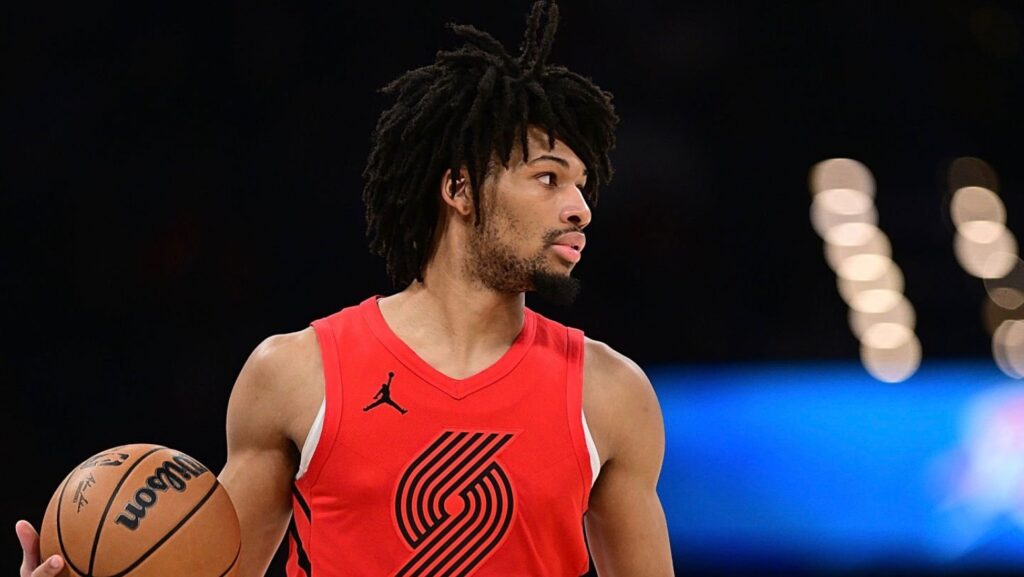
While Barrett is improving as a shooter, most of the players in that group expected to take the next step soon in the national team sooner rather than later have the answer. Bennedict Mathurin jumped from 32.3 percent on threes to 37.4 percent last season on around four attempts per game with the Indiana Pacers, and Shaedon Sharpe shot a passable 33 per cent on 5.6 attempts with the Portland Trail Blazers. Perhaps he will improve, too.
It’s also worth paying attention to Leonard Miller, who barely had opportunities with the Minnesota Timberwolves in his first season in the NBA last year, but shined in the G-League with 20 points per game on sharp shooting. The 20-year-old small forward went finished with a remarkable 37.8 percent on a high volume of 5.6 attempts per game. Will Riley, the 18-year-old forward attending the University of Illinois next season, is another rising talent to watch.
Among the wings, small forward Efeosa Oliogu also has to be mentioned, especially after displaying his scoring and playmaking abilities in the last FIBA U18 AmeriCup. The Overtime Elite’s player averaged 10 points, 2.3 rebounds, and 4.2 assists in 19 minutes per game, going 45 percent from the field and 45 percent from the perimeter.
The ground is more than covered in terms of ball handlers just seeing who is in the actual roster with SGA, Murray, and Nembhard. It’s just a matter of incorporating the size and the shooting featured by the new generations and waiting for the click.
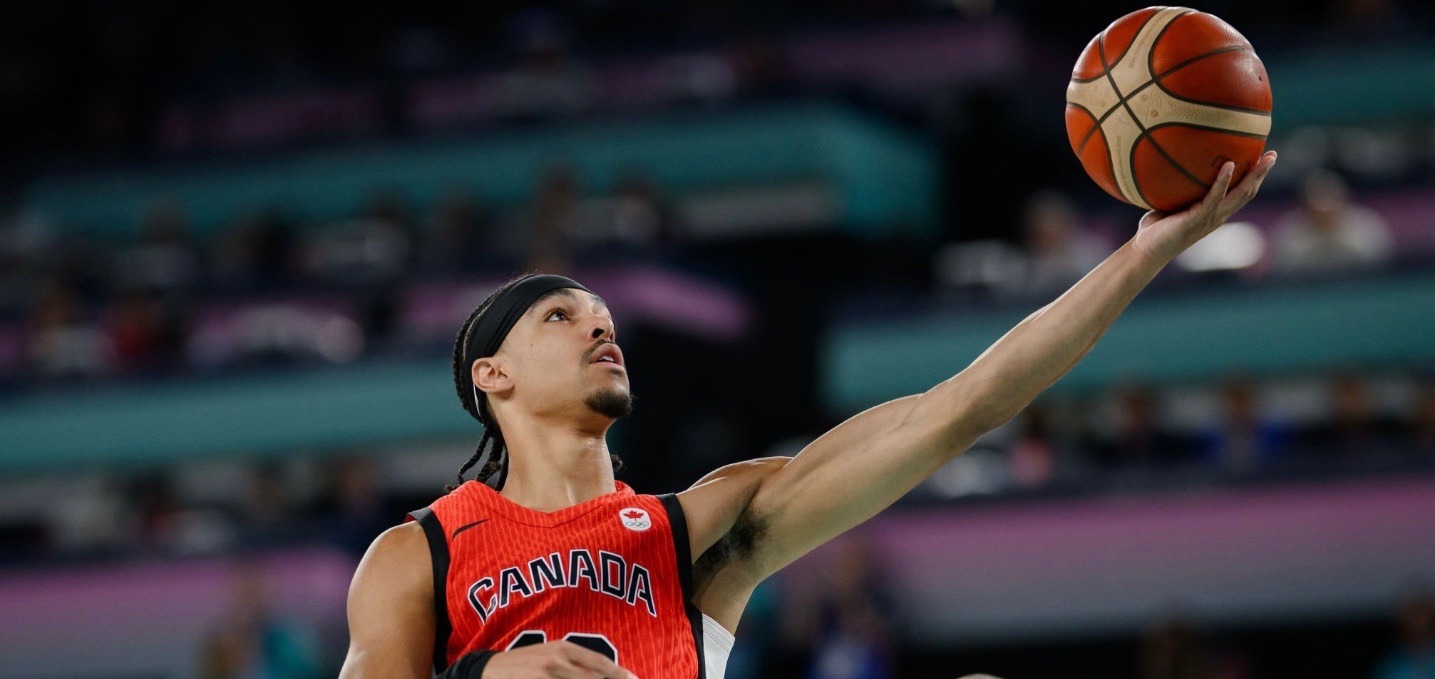
Despite evident offensive struggles against France with a stagnant and heavily iso-based offence at times, Canada has a good starting point thanks to the solid foundation built by Jordi Fernandez in this two-year period. While it’s inarguable that Gilgeous-Alexander is the focal point who orchestrates the offence, it would be unfair to say Fernandez Canada’s offence is mostly based on the talent sparked by the Thunder’s star.
Since his arrival, Badalona’s native has insisted a lot on instilling off-ball movement. It’s not just about the spacing to make it easy for SGA, but also that cut or a couple of timely cuts that happen at some point to move the defence, the movement of RJ Barrett to set himself up to punish the defensive overcommitment on Shai. Not to forget the permanent cutting around the perimeter to offer open looks as Shai or another handler draws the attention on his way to the rim.
Of course, it’s legitimate to have hopes that the Nuggets’ Jamal Murray ends up manifesting himself with Canada. His being a star would go a long way to solving problems — talent trumps all else, and Murray has as much talent as anyone, even if he didn’t show it this last Olympics.
The biggest challenge to assemble the talent
Canada has everything to assemble a potential Olympic champion for L.A., but the national team will have a big challenge in building chemistry and team habits throughout the next four years, with 2025 and 2026 especially crucial.
The upcoming FIBA World Cup won’t be held until 2027. That means the schedule doesn’t offer the most ideal scenarios in the following two years to play this roster together as has been the case in the two last summers. Still, the FIBA AmeriCup is happening next summer, and although it might not be the most compelling competition for the NBA players to commit to, it will be a vital opportunity to build chemistry if they do play. It’s timely to remember the roster that played the 2022 edition didn’t feature any NBA player, which didn’t stop Canada from the medal contention, finishing fourth after falling to Team USA in the matchup for the bronze medal.
Not having any tournament to play in 2026 is another setback. However, is not new for Canada not to have a competition every summer to build on togetherness and chemistry. In this sense, European national teams have the unique advantage of having to compete every single summer with the Olympics, the World Cup, and the key piece in this puzzle, the EuroBasket, which is held every two years.
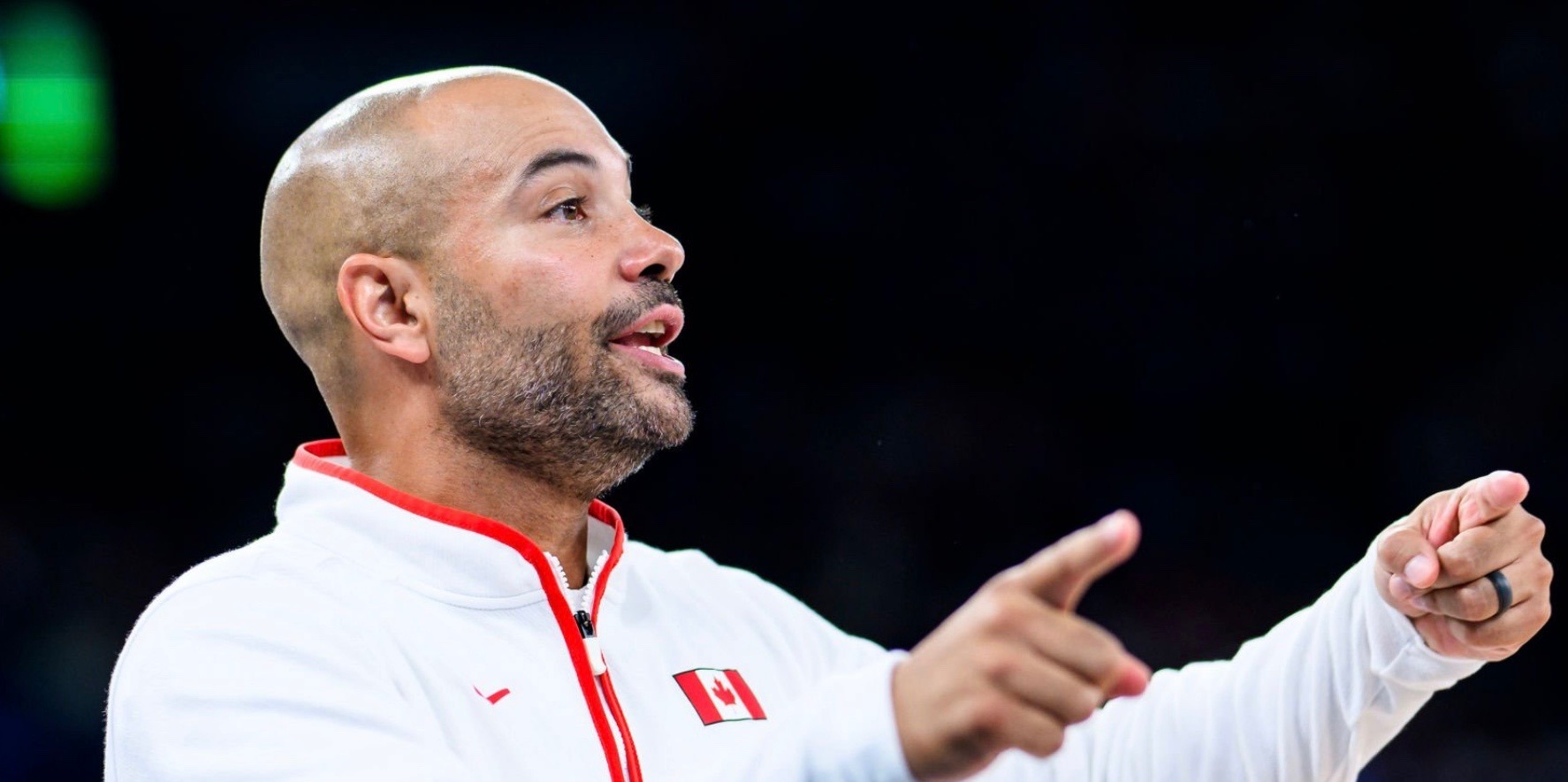
But Canada has to find a way to bring its best players together to keep promoting that team culture that defines European powerhouses like Serbia, Germany, or Spain. Jordi Fernandez knows to what extent it’s important and it’s another reason to offer him a long-term extension. While the context is hard until the 2027 World Cup, the Spaniard has a special connection with the players that might be helpful, especially given that this core of players can’t afford not to play together until 2027. The fact Canada has an increasing number of NBA players, and thus with the same or similar season schedule, could be an edge.
In the City of Love, Canada was far from culminating its love story with basketball and instead got a hard rejection at the hands of the hosts. But the destination of the next Olympics might hint it wasn’t just time for Canada yet. If all goes well, the best is yet to come.

